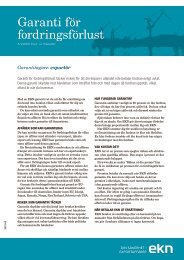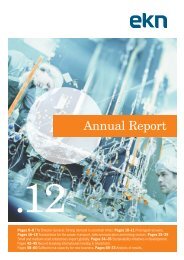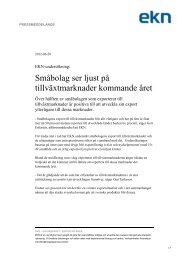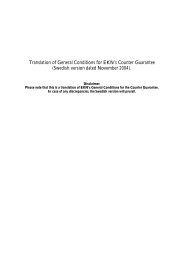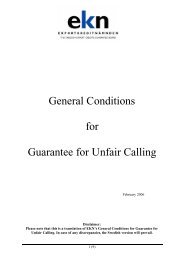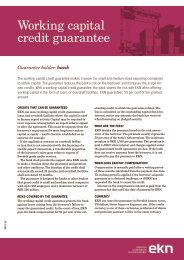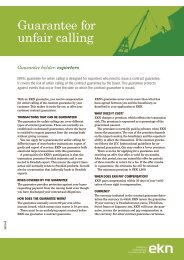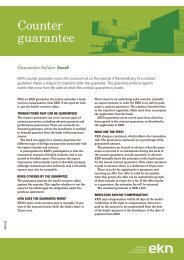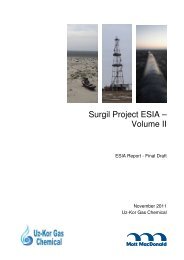Surgil ESIA Report - Volume III - EKN
Surgil ESIA Report - Volume III - EKN
Surgil ESIA Report - Volume III - EKN
You also want an ePaper? Increase the reach of your titles
YUMPU automatically turns print PDFs into web optimized ePapers that Google loves.
“O’ZLITINEFTGAZ”<br />
open joint-stock company<br />
FS «Complex development of <strong>Surgil</strong> field<br />
with extracting of valuable components»<br />
amphibian, etc.), number and characteristics of hunter animals. Ecological control of birds’ population<br />
within anthropogenic impact bounds is carried out in late May and in early June (time of arrival for<br />
brooding). Sections for MES are 1 km routes cleared evenly across the area in question or along the<br />
whole length of a line. MES of mammals is performed when they are mostly vulnerable: during<br />
migrations (2-3 decades of May) as well as during reproduction period (end of spring-beginning of<br />
summer). MES is carried out during the whole construction period and further annually for 5 years and<br />
yet further – once in 3-5 years. During route supervision it is necessary to take into consideration the<br />
following: species composition, number according to biotopes, migrations routes, brooding places.<br />
During points and areas supervision they perform mapping of ecotopes of the rare and vanishing<br />
species of native mammals.<br />
In accordance with the acting normative legal documents when carrying out MES it is also<br />
necessary to track generation, accumulation, temporary storage, transportation, neutralization,<br />
utilization and disposal of all types of wastes produced in the plant. They do inventory of wastes,<br />
separate accumulation and temporary storage of wastes according to their toxicity as well as separation<br />
of wastes according to the safety during transportation matter, issue passports for the toxic wastes and<br />
MES of the disposal areas.<br />
All the foregoing proves the validity and necessity of the complex MES to get optimum<br />
information about every natural environment component state in order to reason and adjust forecasts of<br />
environment changes occurring due to specific anthropogenic impacts in the region. Data obtained<br />
during regular systemic supervisions allows prompt correcting of the nature-conservative arrangements<br />
and preventing emergency situations.<br />
Thus MES at UGCC must include the following:<br />
• atmospheric air condition control;<br />
• waste waters control;<br />
• soil covering control;<br />
• wastes managing control;<br />
• biocontrol.<br />
MES system requirements are the following:<br />
• supervision methods must comply with the normative-methodological documents;<br />
• points and areas selection must depend on the natural environment condition and the<br />
Project specifics;<br />
• actual data on the natural environment condition acquisition must be performed by the<br />
engineering-ecological supervision using routes study, complex and local stationary<br />
supervision;<br />
• acquired data processing is performed by the office work, laboratory chemical-analytical<br />
researches with electronic data processing and modeling of interconnections of<br />
engineering structures with the natural environment components.<br />
In case mercury availability in the feedstock is confirmed it should be included in the list of<br />
contaminants to be controlled.<br />
Layout of points of the supervision network is defined according to the location of the newly<br />
considered complex and is to be approved by the local environmental protection committee.<br />
Book 5. Declaration of environmental impact concerning UGCC construction<br />
41



